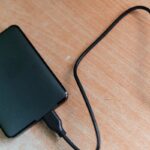Using a Wi-Fi extender can greatly improve your home network’s coverage. Setting up a device like the my-extender helps eliminate dead zones where Wi-Fi is weak or nonexistent. The my-extender can boost your Wi-Fi signal to reach every corner of your home.
To set up the my-extender, plug it in and connect it to your existing network. Access its settings via a web browser to customize your Wi-Fi name and password. There are detailed guides on how to set up your extender for better performance.
Wi-Fi extenders are easy to install and can significantly enhance your Internet experience. For those who have a large home or multi-story house, having a reliable extender is crucial. Learn more about how to boost your Wi-Fi network’s coverage effectively.
Key Takeaways
- The my-extender improves Wi-Fi coverage at home.
- Customize settings through a web browser for better performance.
- Extenders help eliminate dead zones and weak signals.
Understanding Extenders and Network Fundamentals
WiFi Extenders help boost your network’s reach, making internet access possible in areas where the signal was weak or non-existent. This section explains network extension basics and types of extenders, along with their roles.
Fundamentals of Network Extension
Extenders connect to your existing WiFi Network and rebroadcast the signal, effectively increasing coverage. This ensures devices located far from the router, such as those on different floors or behind thick walls, can access the internet.
These devices typically operate on either the 2.4GHz or 5GHz frequency bands. The 2.4GHz band covers a larger area but offers slower speeds, while the 5GHz band provides faster speeds over a shorter range. Most modern extenders support both bands. Some also have Ethernet ports for a more stable wired connection.
Types of Extenders and Their Scope
There are different types of WiFi Range Extenders, like standalone and plug-in models. Standalone extenders are larger and often offer more features, while plug-in extenders are smaller and plug directly into power outlets.
Netgear WiFi Range Extender, for example, provides models like the Range Extender N that are easy to set up and use. They are suitable for homes and small offices. Extenders can also be classified as repeaters, which connect wirelessly to your router, or those that use an Ethernet cable for a more reliable connection.
Knowing your needs helps in selecting the right type of extender to improve your network’s overall performance and coverage. Proper placement is key for optimal performance, ensuring the extended signal reaches all areas effectively without interference.






